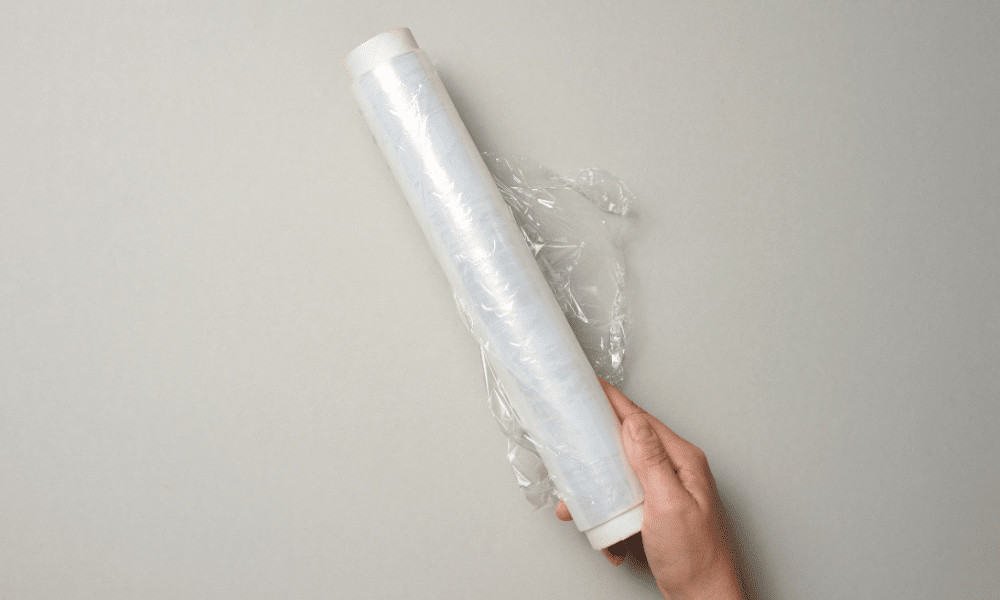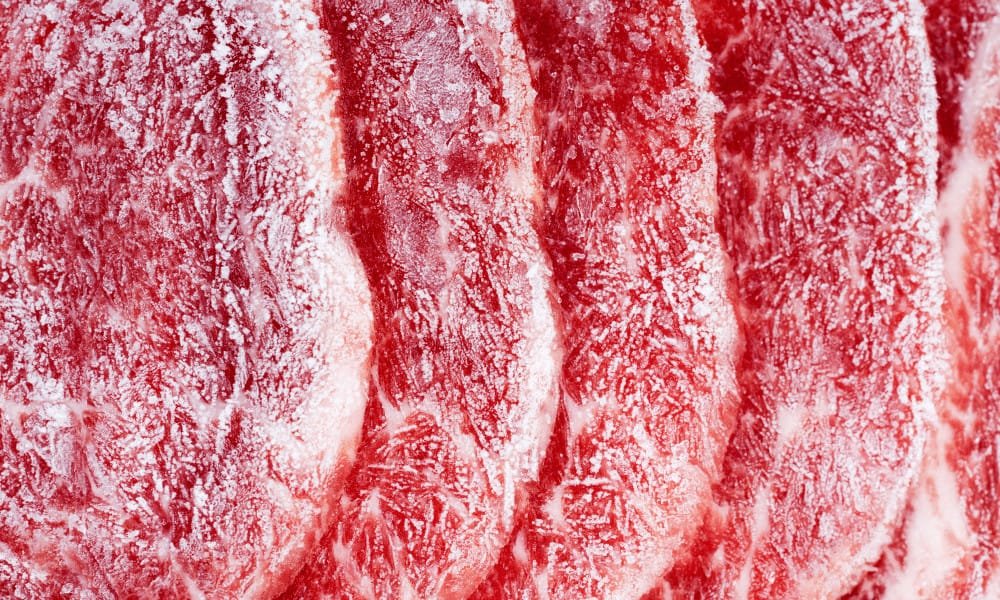Cling film is something most of us have in our kitchen, and most of us will grab it to wrap up leftovers without giving it a second thought. But what if you then decide to freeze those leftovers? Here we look at whether you can freeze food wrapped in cling film or not.

Can You Freeze Food In Cling Film?
While it is safe to freeze foods in cling film, cling film isn’t the best choice as it isn’t airtight, so moisture will leach out of the food, leading to freezer burn. Better options include reusable storage boxes, freezer bags and silicon containers.
Is It Safe to Freeze Food in Cling Film?
There is no specific advice about using cling film to wrap foods in the freezer. Equally, the Food Standards Agency (FSA) in the UK give no specific guidance on the safety of using cling film.
However, there have been claims that chemicals from cling film could leach into food.
While there is little evidence to suggest this is the case at room temperature or below, recent evidence has indicated that when cling film is heated some harmful compounds may leach into food, which is worth considering when it comes to defrosting or cooking your frozen food.
The Food Safety Authority of Ireland and the United States Department of Agriculture both advise that cling film is safe to use but that to minimise any potential risks, some simple precautions can be taken.
Don’t use cling film to wrap high-fat foods, such as cheese, fatty meats or pastry products. This is because some chemicals used in plastics dissolve more easily in fatty substances.
Also, make sure that the cling film isn’t touching the food while being heated.
What are the Drawbacks of Freezing Food in Cling Film?
One of the main reasons we wrap food before putting it in the freezer is to trap the moisture inside. If moisture is allowed to escape, then items become dehydrated, and this causes freezer burn (more about freezer burn here).
While it is perfectly safe to eat food that has been damaged by freezer burn, it can change the colour, taste and texture, and make eating the item less enjoyable.

Cling film on its own will not protect your food from dehydration. Firstly, when it goes in the freezer, cling film loses its clinging property, so no matter how tightly you think you’ve wrapped the item, it is unlikely to stay that way.
Secondly, cling film is very thin and flimsy. Over time, air and moisture will seep through the surface, allowing the food within to become dehydrated. It is also vulnerable to ripping and tearing.
It is also worth remembering that cling film is not recyclable, and in these more environmentally aware times, most of us are trying to cut down on our use of single-use plastics.
Cling film can help, but it’s not the most effective way to prevent freezer burn. For best results, use it as an initial layer before placing the food in a freezer bag or container, squeezing out as much air as possible.
Can I Freeze Food in the Plastic Wrap It Came in?
If you’ve bought meat from the supermarket in a plastic tray wrapped in cling film and want to freeze it, putting it straight into the freezer in its supermarket packaging can be tempting.
While it is perfectly safe to do so, it won’t keep the meat in its best condition.
As noted above, cling film is not airtight, and over time moisture will leach out of the packaging, leading to freezer burn, which will impact on the quality of the meat.
If you intend to cook the meat in the next few weeks it will probably have little impact, but if you intend on storing it in the freezer for longer, it’s definitely worth repackaging it.
What are the Benefits of Freezing Food in Cling Film?
While cling film isn’t the best choice for wrapping food in the freezer, it does have some advantages. It is thin and flexible, allowing you to wrap it tightly around food and avoid trapping air in with the food.
It’s also inexpensive, and it is transparent, making it easy to see what’s inside.
Another benefit of cling film is that it can go in the microwave, so if you are likely to want to use the microwave to defrost or cook your frozen item, cling film could be a good choice, though do take note of the safety precautions above.
Which Foods Freeze Well in Cling Film?
Cling film is great for separating items before then overwrapping them in storage bags or boxes. For example, you could use cling film to separate burgers, fish fillets or chicken breasts, before then placing them inside a storage container.
It’s also worth considering storing the cling film itself in the freezer! Many people struggle with cling film because of its clinging properties, with it sticking to their hands and surfaces and generally getting in a dreadful tangle.
However, keeping your roll of cling film in the freezer could help with this. The cooler air helps to reduce static electricity, and it also seems that freezing changes the molecular makeup of the plastic wrap, making it much easier to handle.
Most foods can be wrapped in cling film for freezing, but it’s not always the best choice. For example, foods with sharp edges (like raw meat with bones) might puncture the cling film, and liquids are more prone to leaking.
What is Better Than Cling Film for Freezing Food?
Reusable plastic tubs are a great option for storing food in the freezer, as they are airtight and thus avoid freezer burn and the resultant impact on quality.
Plastic freezer bags are an option, but these aren’t really reusable, so not a great choice for the environment.
Silicone is a great alternative if you are concerned about the possibility of chemicals leaching out of plastics into your food. Silicone storage boxes and bags are widely available and come in a range of shapes and sizes.
Silicone storage containers are reusable, plus silicone is made from naturally occurring elements, so this is a great option for the environmentally conscious. Silicone can also be used in both the microwave and the oven.
What are the Best Storage Options?
The best containers for freezing food include freezer-safe plastic bags, plastic containers, and glass containers. Vacuum-sealed bags are great for long-term freezing, while aluminium foil and freezer paper can provide extra protection against freezer burn. Always label your containers with the date and contents for easy identification later.


